Folding Bike Pros and Cons: Your Best Guide in 2025
If you’re considering a switch to a more compact, efficient form of transportation, folding bikes might have caught your attention. Weighing the folding bike pros and cons is essential before making a purchase. These bikes are designed to provide convenience and versatility, making them an attractive option for city dwellers, commuters, and even those who enjoy recreational cycling. However, like any product, they have their advantages and disadvantages. In this comprehensive guide, we’ll explore everything you need to know about folding bikes, helping you determine if they are the right choice for you.
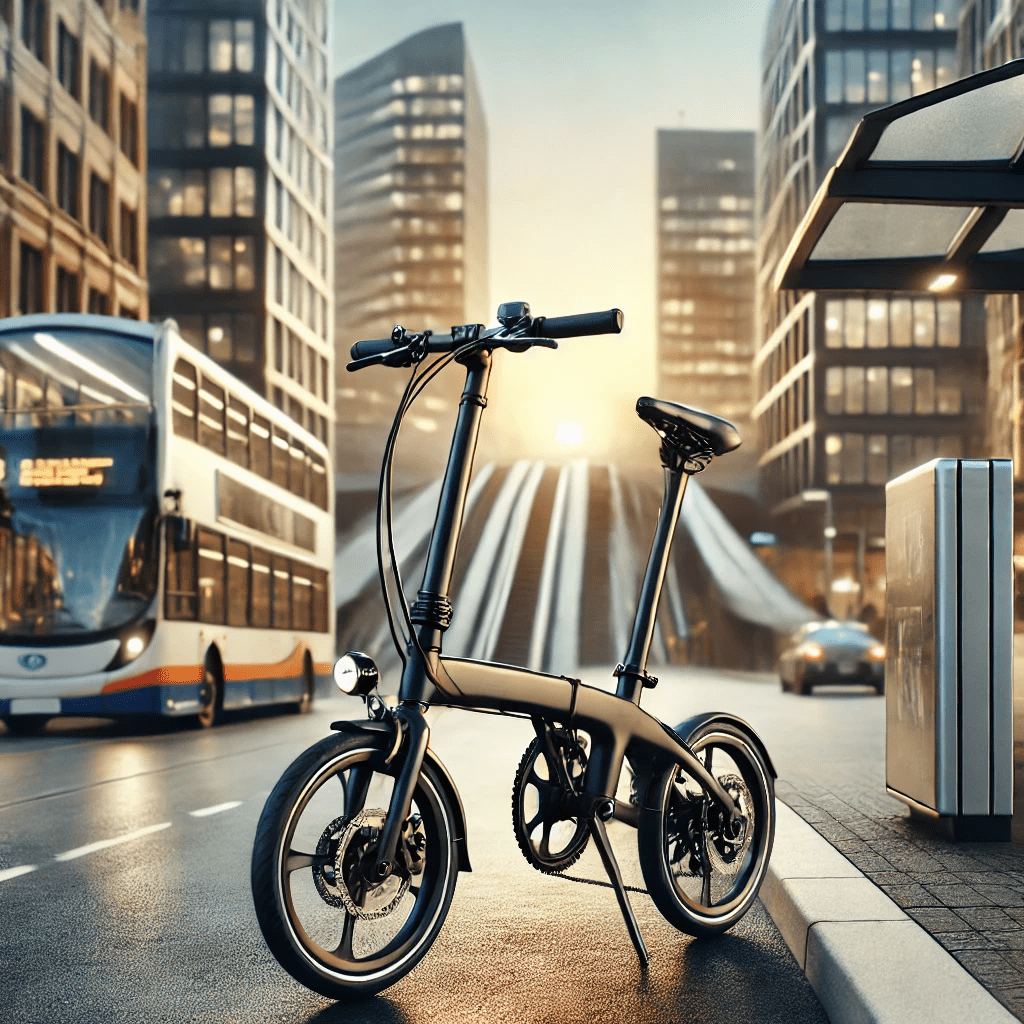
The Appeal of Folding Bikes
Folding bikes have become increasingly popular, especially in urban environments with limited space. The ability to fold and store a bike easily is a significant advantage, but it’s not the only reason people opt for these compact cycles. Understanding the folding bike pros and cons will give you a clearer picture of why these bikes are gaining traction.
Portability and Storage
One of the most obvious benefits of a folding bike is its portability. When commuting in a bustling city, the ability to fold your bike and carry it onto public transport or store it under your desk at work is invaluable. Unlike traditional bikes, which require substantial space, folding bikes can be tucked away neatly, making them ideal for apartment dwellers or anyone with limited storage.
Combination with Public Transport

Another key advantage in the folding bike pros and cons discussion is how well these bikes integrate with public transport systems. Whether you’re hopping on a bus, train, or even a ferry, a folding bike can be your perfect travel companion. This flexibility allows you to cover greater distances than you might with just a regular bike.
Security and Theft Prevention
Bike theft is a significant concern for many cyclists, especially in urban areas. Folding bikes offer a solution to this problem. Since they can be easily folded and carried indoors, you can keep your bike with you at all times, reducing the risk of theft. This security aspect is a major plus when considering the folding bike pros and cons.
Versatility and Adaptability
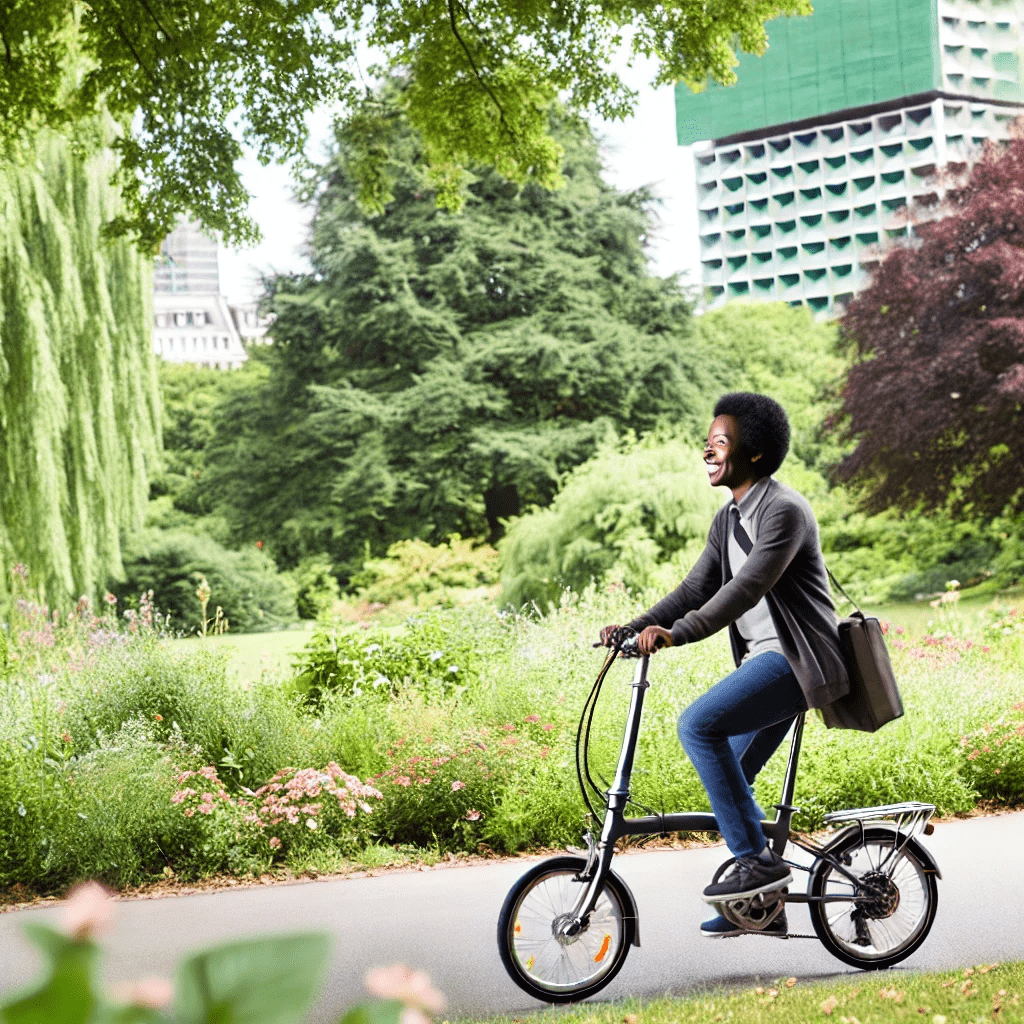
Folding bikes are incredibly versatile. They’re not just for commuting; they can also be used for recreational cycling, exercise, and even touring. The adaptability of these bikes is one of their most appealing features. They come in various designs, from models suited for short city rides to those capable of handling more rugged terrain.
Environmental Impact
Cycling, in general, is an environmentally friendly mode of transport, and folding bikes are no exception. By choosing to cycle instead of driving or using other forms of motorized transport, you’re reducing your carbon footprint. In the context of folding bike pros and cons, this environmental benefit is a compelling reason to consider making the switch.
Cost-Effective in the Long Run
While the initial cost of a folding bike might be higher than that of a traditional bike, the long-term savings can be significant. Folding bikes typically have lower maintenance costs, and by combining cycling with public transport, you can save on fuel, parking, and other commuting expenses. This cost-effectiveness is an important factor to consider when weighing the folding bike pros and cons.
Understanding the Different Types of Folding Bikes
Not all folding bikes are created equal. There are various types, each with its unique features and benefits. Understanding these different types will help you better assess the folding bike pros and cons and choose the model that best suits your needs.
Compact Folding Bikes
Compact folding bikes are the most common type, designed primarily for city commuting. These bikes fold down to a small size, making them easy to carry and store. They are typically lightweight and feature smaller wheels, which contributes to their portability. However, the small wheel size can affect ride quality, particularly on uneven surfaces.
Full-Sized Folding Bikes
Full-sized folding bikes offer the benefits of a traditional bike with the added convenience of folding. These bikes have standard-sized wheels, which provide a more comfortable ride, especially over long distances. However, they are generally heavier and bulkier when folded, which can be a drawback in certain situations.
Electric Folding Bikes
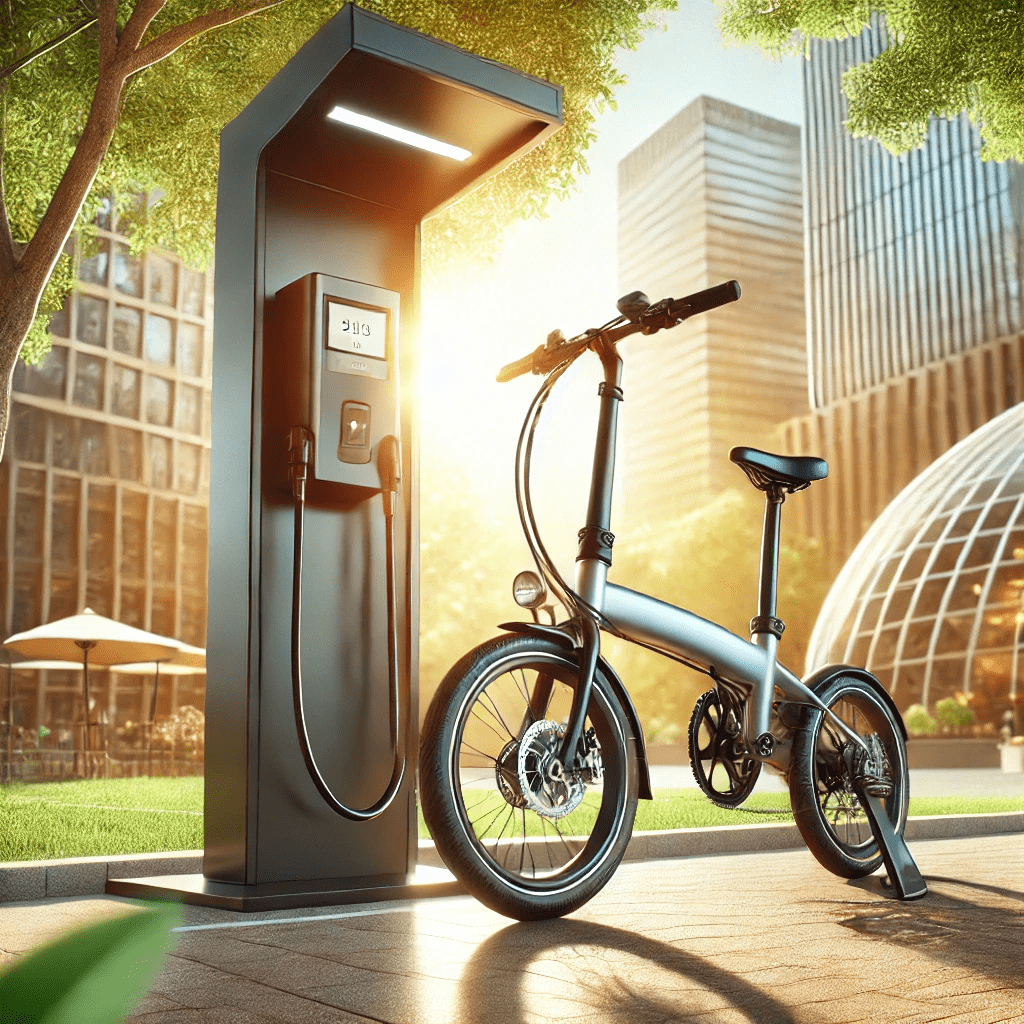
Electric folding bikes combine the convenience of folding bikes with the added benefit of an electric motor. These bikes are perfect for those who want to reduce the physical effort required for commuting or tackling hilly terrain. However, they are usually more expensive and heavier than non-electric folding bikes. When considering folding bike pros and cons, the added weight and cost of electric models are important factors to keep in mind.
Performance Folding Bikes
For those who don’t want to compromise on speed or performance, performance folding bikes are the way to go. These bikes are designed for cyclists who need a folding bike but don’t want to sacrifice the ride quality of a high-end road bike. They often feature lightweight frames, high-quality components, and aerodynamic designs. However, they tend to be more expensive and may not fold as compactly as other types.
Specialty Folding Bikes
Specialty folding bikes are designed for specific purposes, such as off-road riding or touring. These bikes come with features tailored to their intended use, such as suspension systems for off-road models or extra storage options for touring bikes. While they offer unique benefits, they may not be as versatile or compact as other folding bike types.
Key Features to Consider
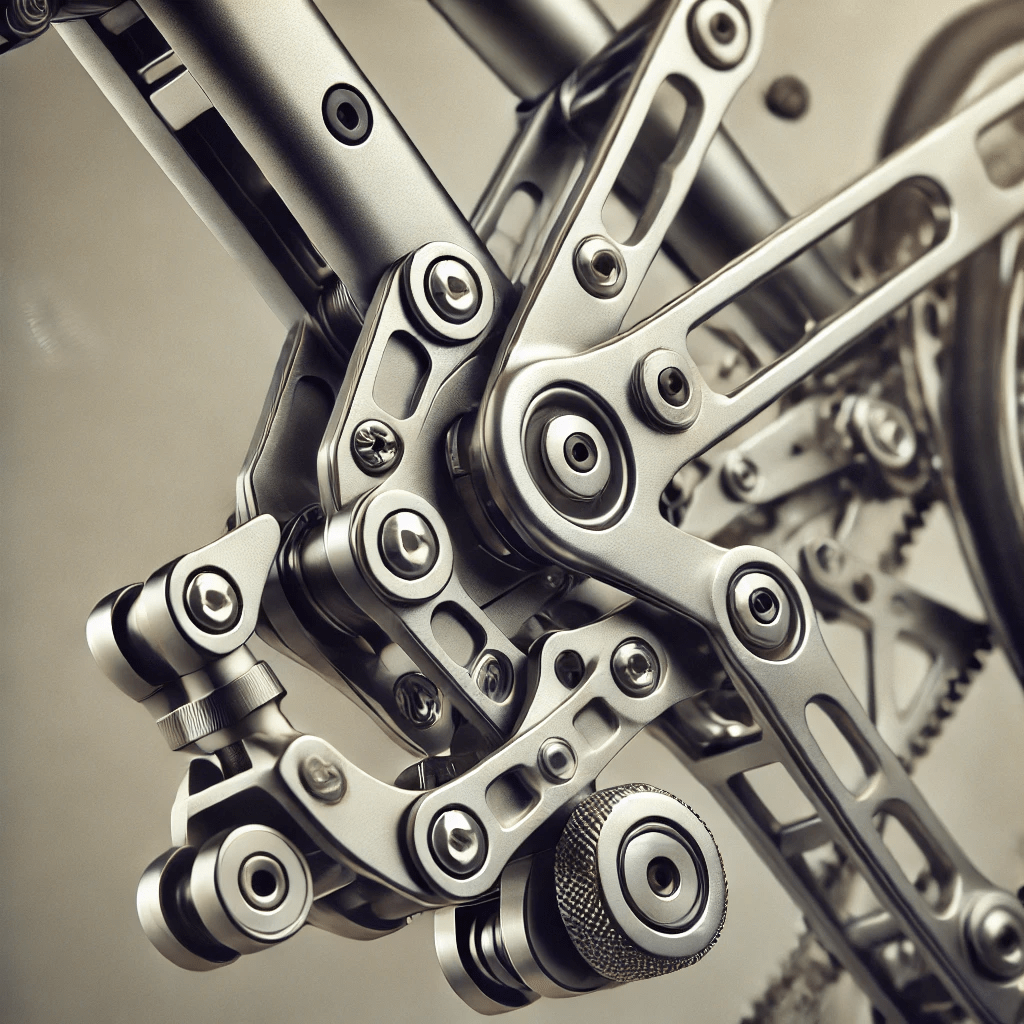
When shopping for a folding bike, there are several key features to consider. Understanding these features will help you make an informed decision and fully appreciate the folding bike pros and cons.
Frame Material
The frame material plays a crucial role in determining the bike’s weight, durability, and ride quality. Common materials include aluminum, steel, and carbon fiber. Aluminum is lightweight and resistant to rust, making it a popular choice for folding bikes. Steel is heavier but offers better durability and a smoother ride. Carbon fiber is the lightest and most expensive option, offering superior performance but at a higher cost.
Wheel Size
Folding bikes come with various wheel sizes, typically ranging from 16 inches to 24 inches. Smaller wheels make the bike more compact when folded but can affect ride stability and comfort. Larger wheels provide a smoother ride and better performance but make the bike bulkier when folded. Balancing wheel size with your specific needs is important when evaluating the folding bike pros and cons.
Folding Mechanism
The folding mechanism is one of the most critical aspects of a folding bike. Some bikes fold in half, while others feature more complex mechanisms that allow for a smaller folded size. The ease of folding and unfolding the bike is crucial, especially if you plan to use it daily. A bike that takes too long to fold or requires complicated steps can become frustrating over time.
Weight
The weight of the bike is a significant factor, especially if you need to carry it regularly. Lighter bikes are easier to transport but may sacrifice some durability or ride quality. Heavier bikes might offer better performance but can be cumbersome to carry, especially if you need to navigate stairs or crowded public transport.
Gear Range
The gear range is important for determining how well the bike can handle different types of terrain. If you plan to use your folding bike for commuting in a flat urban environment, a simple gear system might suffice. However, if you’ll be tackling hills or varying terrain, a bike with a wider gear range will be more suitable.
Braking System
The type of braking system can affect both safety and maintenance. Folding bikes typically come with either rim brakes or disc brakes. Rim brakes are lighter and easier to maintain, while disc brakes offer better stopping power, especially in wet conditions. Consider your environment and how much you prioritize braking performance when weighing the folding bike pros and cons.
Suspension
Some folding bikes come with suspension systems to absorb shocks and provide a smoother ride. This feature is particularly useful if you plan to ride on uneven surfaces or for longer distances. However, suspension can add weight and complexity to the bike, so it’s important to consider whether you really need it.
Price
Folding bikes range widely in price, from budget-friendly models to high-end options. While it might be tempting to go for the cheapest option, keep in mind that you often get what you pay for in terms of quality, durability, and performance. When considering folding bike pros and cons, think about your budget and how much you’re willing to invest in a bike that meets your needs.
Step-by-Step Guide to Choosing a Folding Bike
Choosing the right folding bike involves more than just picking one that looks good. You need to carefully consider how each bike’s features align with your needs. Below is a step-by-step guide to help you make an informed decision.
Step 1: Define Your Purpose
The first step in choosing a folding bike is to define its primary use. Are you looking for a bike to commute to work, or do you need something for recreational rides on the weekends? Your intended use will heavily influence the type of folding bike that’s best for you. Understanding the folding bike pros and cons in the context of your specific needs is crucial at this stage.
Step 2: Consider Your Commute
If you plan to use the bike for commuting, think about the length and type of your commute. A short, flat ride might not require a high-end bike, but if you have to cover longer distances or navigate hills, you might need a bike with more gears and better suspension. Also, consider how often you’ll need to fold and carry the bike during your commute.
Step 3: Set a Budget
Determine how much you’re willing to spend on a folding bike. Prices can vary significantly, so having a budget in mind will help narrow down your options. Remember to factor in additional costs such as accessories and maintenance. While it might be tempting to go for the cheapest option, investing in a higher-quality bike can offer better performance and durability in the long run.
Step 4: Test Ride Different Models
If possible, visit a bike shop and test-ride different models. This will give you a better sense of how each bike feels and performs. Pay attention to factors such as comfort, ease of folding, and how the bike handles. Test riding can help you better understand the folding bike pros and cons of each model you’re considering.
Step 5: Research Brands and Reviews
Before making a final decision, do some research on different brands and read customer reviews. This will give you insight into the bike’s reliability and any potential issues. Look for reviews from people with similar needs to yours, as their experiences will be more relevant to your situation.
Step 6: Make Your Purchase
Once you’ve gathered all the information, it’s time to make your purchase. Choose a bike that best aligns with your needs, budget, and preferences. Don’t forget to purchase any necessary accessories, such as lights, locks, and a helmet.
Step 7: Practice Folding and Unfolding
After purchasing your bike, practice folding and unfolding it until you can do it quickly and easily. This will save you time and frustration during your daily commute. Being proficient in folding and unfolding your bike is an important aspect of maximizing the benefits and minimizing the drawbacks in the folding bike pros and cons equation.
Step 8: Maintain Your Bike Regularly
To keep your folding bike in top condition, regular maintenance is essential. This includes cleaning the bike, lubricating the chain, checking the brakes, and inspecting the folding mechanisms. Proper maintenance will extend the life of your bike and ensure it performs well.
Detailed Analysis of Folding Bike Pros and Cons
Now that you have a good understanding of what to look for in a folding bike, let’s delve deeper into the specific pros and cons. This detailed analysis will help you weigh the advantages and disadvantages to determine if a folding bike is the right choice for you.
Pros of Folding Bikes
Portability and Compactness
The primary advantage of a folding bike is its portability. The ability to fold your bike into a compact size makes it incredibly convenient for storage and transportation. This is especially useful for people who live in small apartments or need to bring their bike onto public transport. When you’re weighing the folding bike pros and cons, this is usually the most compelling benefit.
Easy Storage
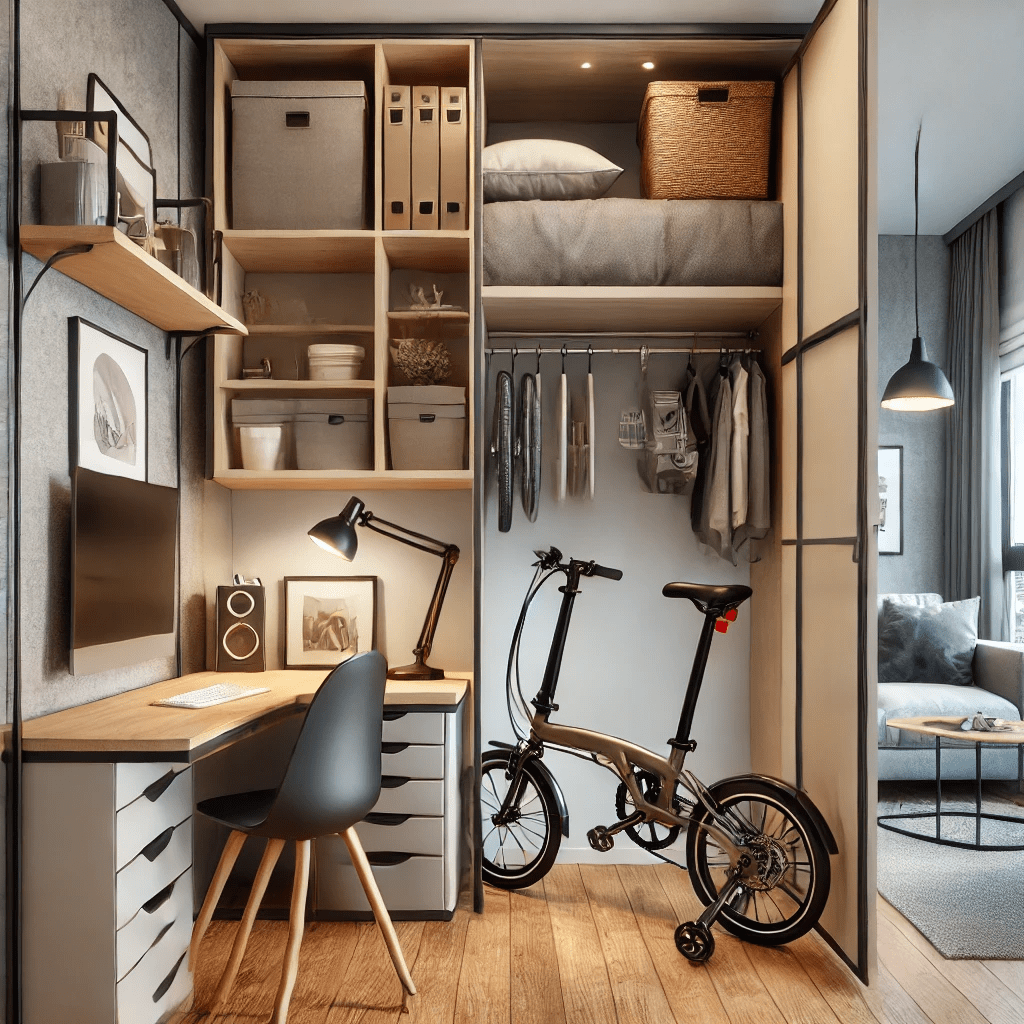
In addition to portability, folding bikes are easy to store. Whether you’re keeping it in your home, office, or even in your car, a folding bike takes up much less space than a traditional bike. This is particularly beneficial for those with limited storage options.
Theft Prevention
As mentioned earlier, folding bikes can help prevent theft. Because you can bring your bike indoors, you don’t have to worry about leaving it locked up outside where it might be vulnerable to theft. This added security is a significant advantage in the folding bike pros and cons discussion.
Versatility
Folding bikes are incredibly versatile. They can be used for commuting, recreational riding, and even touring. Their adaptability makes them a great option for people with varied cycling needs. This versatility is a strong point in favor of folding bikes when considering the folding bike pros and cons.
Environmental Benefits

Cycling is a green mode of transportation, and folding bikes contribute to reducing your carbon footprint. By opting for a folding bike instead of driving or using other forms of motorized transport, you’re making an environmentally friendly choice.
Cost-Effective Over Time
While the initial cost of a folding bike might be higher, they are cost-effective in the long run. You’ll save on commuting costs, parking fees, and potentially even gym memberships if you use your bike for exercise. This long-term cost-effectiveness is an important consideration in the folding bike pros and cons evaluation.
Convenience for Multi-Modal Commuting
For those who combine cycling with public transport, folding bikes offer unparalleled convenience. You can easily switch between cycling and using public transport, making your commute more flexible and efficient. This convenience is a major advantage when looking at the folding bike pros and cons.
Cons of Folding Bikes
Higher Initial Cost
One of the main disadvantages of folding bikes is their higher initial cost. Quality folding bikes are often more expensive than traditional bikes, which can be a barrier for some people. When considering folding bike pros and cons, it’s important to factor in the cost.
Heavier Weight in Some Models
While some folding bikes are lightweight, others, particularly full-sized and electric models, can be quite heavy. This can make them difficult to carry, especially if you need to navigate stairs or crowded public transport. The weight of the bike is a significant factor in the folding bike pros and cons analysis.
Compromised Ride Quality
Due to their smaller wheels and compact design, some folding bikes may offer a less comfortable ride compared to traditional bikes. This is especially noticeable on rough or uneven surfaces. If ride quality is a priority, this could be a drawback when evaluating the folding bike pros and cons.
Limited Gear Range
Folding bikes often have a more limited gear range compared to traditional bikes. This can make them less suitable for hilly terrain or long-distance rides. If you need a bike that can handle a wide range of conditions, this limitation is an important factor in the folding bike pros and cons discussion.
Maintenance of Folding Mechanisms
The folding mechanisms on these bikes require regular maintenance to ensure they function properly. If not properly maintained, these mechanisms can wear out or become difficult to use. This added maintenance requirement is a potential drawback when considering the folding bike pros and cons.
Bulkiness When Folded (in Some Models)
While folding bikes are generally compact, some models can still be bulky when folded. This is particularly true for full-sized and electric folding bikes. If space is at a premium, this bulkiness could be a disadvantage in the folding bike pros and cons evaluation.
Learning Curve for Folding and Unfolding
There can be a learning curve when it comes to folding and unfolding the bike. Some models have complex folding mechanisms that take time to master. If you need to fold and unfold your bike frequently, this learning curve could be seen as a drawback when weighing the folding bike pros and cons.
Maintenance and Care Tips for Folding Bikes
Maintaining your folding bike is essential to ensure it remains in good working condition and continues to provide the benefits you expect. Below are some tips to help you keep your bike in top shape.
Regular Cleaning
Regular cleaning is crucial, especially if you ride in wet or dirty conditions. Dirt and grime can accumulate in the folding mechanisms, potentially causing them to jam or wear out. Wipe down your bike after each ride, and give it a more thorough cleaning periodically.
Lubricate Moving Parts
To keep the folding mechanisms and other moving parts working smoothly, regularly lubricate them. Use a high-quality bike lubricant and apply it to the chain, hinges, and any other moving parts. Be sure not to over-lubricate, as this can attract dirt and cause more harm than good.
Check Tire Pressure
Like any bike, it’s important to keep your tires properly inflated. Check the tire pressure regularly and inflate them to the recommended level. Properly inflated tires will improve ride quality and reduce the risk of flats.
Inspect the Brakes
Regularly inspect your brakes to ensure they’re functioning correctly. Check the brake pads for wear and replace them if necessary. Also, make sure the brake cables are in good condition and adjust them if needed.
Tighten Bolts and Screws
Over time, bolts and screws can loosen due to the vibrations from riding. Periodically check all the bolts and screws on your bike, especially those related to the folding mechanisms, and tighten them as needed.
Store Properly
When not in use, store your folding bike in a dry, cool place. If possible, keep it indoors to protect it from the elements. Proper storage will prevent rust and other damage, prolonging the life of your bike.
Regularly Check Folding Mechanisms
The folding mechanisms are a critical part of your bike, and they need to be kept in good working order. Regularly check them for signs of wear or damage, and address any issues immediately. If the mechanisms become stiff or difficult to use, apply lubricant or consult a professional for repairs.
Professional Maintenance
Even with regular home maintenance, it’s a good idea to have your folding bike serviced by a professional at least once a year. A professional can perform more thorough maintenance and address any issues that might not be immediately apparent.
FAQs
What are the main benefits of using a folding bike?
The main benefits of using a folding bike include portability, easy storage, theft prevention, versatility, environmental benefits, cost-effectiveness, and convenience for multi-modal commuting.
What are the common drawbacks of folding bikes?
The common drawbacks include a higher initial cost, heavier weight in some models, compromised ride quality, limited gear range, the need for regular maintenance of folding mechanisms, bulkiness when folded in some models, and a learning curve for folding and unfolding.
Can folding bikes handle long-distance rides?
While folding bikes are primarily designed for short to medium commutes, some models are capable of handling longer distances comfortably. However, they may not be as comfortable or efficient as traditional road bikes for long rides.
Are folding bikes suitable for all terrains?
Folding bikes are best suited for urban environments and relatively smooth terrain. While some models can handle rougher surfaces, they generally aren’t designed for off-road use or extremely hilly terrain.
How often should I maintain my folding bike?
Regular maintenance is crucial for keeping your folding bike in good condition. You should clean your bike after each ride, lubricate moving parts regularly, and perform a more thorough check every few months. Additionally, have your bike professionally serviced at least once a year.
What should I look for when buying a folding bike?
When buying a folding bike, consider factors such as frame material, wheel size, folding mechanism, weight, gear range, braking system, suspension, and price. Test-riding different models and researching brands can also help you make an informed decision.
How do I choose the right folding bike for my needs?
To choose the right folding bike, start by defining your primary use for the bike. Consider your commute, set a budget, test-ride different models, and research brands and reviews. Make sure the bike’s features align with your needs, preferences, and budget.
Conclusion

Weighing the folding bike pros and cons is crucial in making an informed decision that aligns with your lifestyle and needs. Folding bikes offer numerous advantages, such as portability, easy storage, and theft prevention, making them an excellent choice for urban dwellers and commuters. However, they also come with certain trade-offs, including a higher initial cost, potentially heavier weight, and compromised ride quality.
If you’re still unsure, consider reading more detailed reviews or checking out some of our other articles, like Best BMX Bike Brands and Best Tent for Hunting. For further information on bike maintenance and care, external resources such as Bicycle Warehouse and Cycling Weekly provide valuable insights.
Ultimately, the decision to purchase a folding bike should be based on how well the pros outweigh the cons for your specific situation. With the right model and proper maintenance, a folding bike can become an invaluable part of your daily routine, offering convenience, efficiency, and even a bit of fun along the way.
